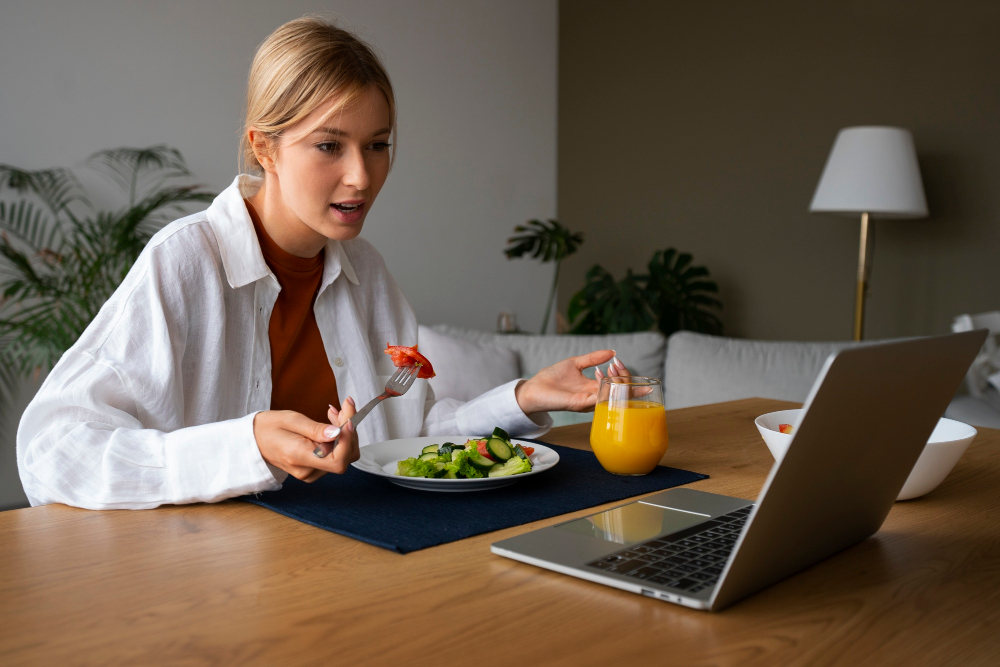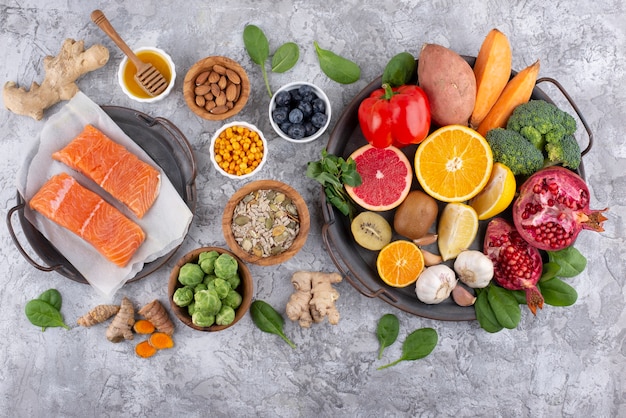Increasing your daily fiber intake is one of the easiest ways to improve your health. Fiber helps with digestion, keeps your bowel movements regular, lowers cholesterol, and helps control blood sugar. It fills you up and keeps your energy stable.
Most adults don’t eat enough fiber. The daily goal is 25 to 30 grams, but most people only get around 15 grams. That gap can cause long-term problems like constipation, high blood sugar, and heart issues.
In this guide, you’ll find simple, practical tips to increase your fiber each day using real, everyday foods.
1. Start Your Day with High-Fiber Breakfasts
High-fiber breakfasts are the best way to begin your day with the right nutrients. A good breakfast sets the tone for your eating habits all day. When you eat fiber in the morning, your stomach stays full longer and you avoid mid-morning hunger.
Smart breakfast ideas
- Oatmeal with chia seeds and banana slices gives lasting energy and 10–12g of fiber.
- Whole grain toast with avocado and boiled eggs is filling and easy to make.
- Greek yogurt topped with berries and flaxseed adds 8–10g fiber and protein.
Adding fiber early helps your body stay regular and avoid blood sugar crashes later.
2. Replace Refined Grains with Whole Grains
Whole grains are better than refined grains because they contain more fiber. White rice, white bread, and regular pasta lose most of their fiber during processing. Whole grains keep all parts of the grain, including the bran and germ, where fiber is found.
Swap refined for whole grain
- Replace white rice with brown rice or quinoa
- Choose whole wheat bread instead of white
- Use whole grain tortillas or wraps instead of regular ones
Even small changes like switching to whole grain crackers or whole wheat pasta at dinner can help you get 3–5 extra grams of fiber per meal.
3. Eat More Beans, Lentils, and Legumes
Beans, lentils, and peas give a big fiber boost in just one serving. They are packed with protein, fiber, and vitamins. You can use them in many dishes, and they’re budget-friendly too.
Easy ways to eat more
- Add chickpeas to salads
- Use black beans in tacos or wraps
- Make lentil soup or stews
- Try split peas in curries or dhal
Beans are great for your gut, reduce sugar spikes, and help control cholesterol.
4. Add Vegetables to Every Meal
Adding vegetables to every meal helps increase fiber without much effort. Vegetables are high in fiber and full of vitamins and minerals. Cooked or raw, they improve digestion and help you feel full longer.
Fiber-rich vegetables (per cooked cup)
| Fiber-Rich Vegetables | Per Cooked Cup |
| Broccoli | 5g |
| Brussels sprouts | 4g |
| Carrots | 4g |
| Spinach | 4g |
Ways to include more vegetables
- Put spinach or bell peppers in your morning eggs
- Eat a side of steamed broccoli or mixed veggies at dinner
- Add grated carrots or zucchini to sauces or ground meat
Eating vegetables with lunch and dinner increases fiber without changing your main dish.
5. Snack on Foods That Are High in Fiber
High-fiber snacks keep you full between meals and help you stay energized. Choosing the right snack prevents overeating and keeps your digestion working well.
Fiber-rich snack choices
- Popcorn (3.6g in 3 cups, air-popped) is crunchy and filling
- Almonds (3.5g per ounce) give protein and healthy fats
- Apples and pears with skin give 4–5g fiber each
- Carrot sticks or celery with hummus are a fresh, satisfying combo
Avoid processed snacks that are high in sugar and low in fiber. Pick options that support your fiber goals and gut health.
6. Eat Whole Fruits with the Skin
Whole fruits with their skin have more fiber than peeled ones. The skin holds the most fiber, especially in apples, pears, plums, and kiwis.
Best fiber-rich fruits with skin
- Apple – 4.4g
- Pear – 5.5g
- Plum – 1g
- Kiwi – 2g
Just wash your fruits properly before eating. For better digestion and nutrients, eat whole fruit instead of drinking fruit juice, which lacks fiber.
7. Add Fiber Boosters When Cooking
You can boost your fiber intake easily by adding a few ingredients to your meals. These fiber-rich foods don’t change the taste but increase the fiber quickly.
Best fiber add-ins
- Chia seeds – 10g per 2 tbsp
- Ground flaxseed – 3g per tbsp
- Oat bran – 5.7g per ¼ cup
Where to add them
- Mix chia into smoothies or oatmeal
- Add flaxseed to pancake or muffin batter
- Stir oat bran into meatloaf, burgers, or soups
These add-ins are easy to store, use and boost your daily fiber total without extra cooking.
8. Drink Enough Water with High Fiber Foods
Drinking enough water is important when you increase fiber. Fiber pulls water into your gut. Without water, it can cause bloating, gas, or even constipation.
Water tips
- Drink at least 8 cups (2 liters) daily
- Add 250ml extra for every 5g more fiber you eat
- Keep a water bottle with you throughout the day
Hydration helps fiber do its job properly and keeps digestion smooth.
Frequently Asked Questions (FAQs)
What is the best form of fiber intake?
The best way to get fiber is from whole foods like fruits, vegetables, beans, and whole grains. These foods give you both soluble and insoluble fiber and vitamins and minerals that your body needs.
How to get 25g fiber a day?
To reach 25g fiber a day, eat fiber-rich meals like oatmeal for breakfast, beans or lentils at lunch, and vegetables with dinner. Add snacks like nuts, popcorn, or fruit with skin to fill in the rest.
How much fiber per day to lose weight?
Eating 30g of fiber a day can help with weight loss by keeping you full and reducing hunger. High-fiber foods slow down digestion, which helps you eat less without feeling hungry.
Conclusion
Increasing your daily fiber intake is simple when you focus on natural, whole foods. Adding fiber-rich options like beans, vegetables, fruits with skin, and whole grains to your meals can support your digestion, balance your blood sugar, and help you feel fuller longer.
Your goal should be to reach 25 to 30 grams of fiber daily using foods you already enjoy. By drinking enough water, adding fiber slowly, and reading food labels, you can make these changes without stress.






